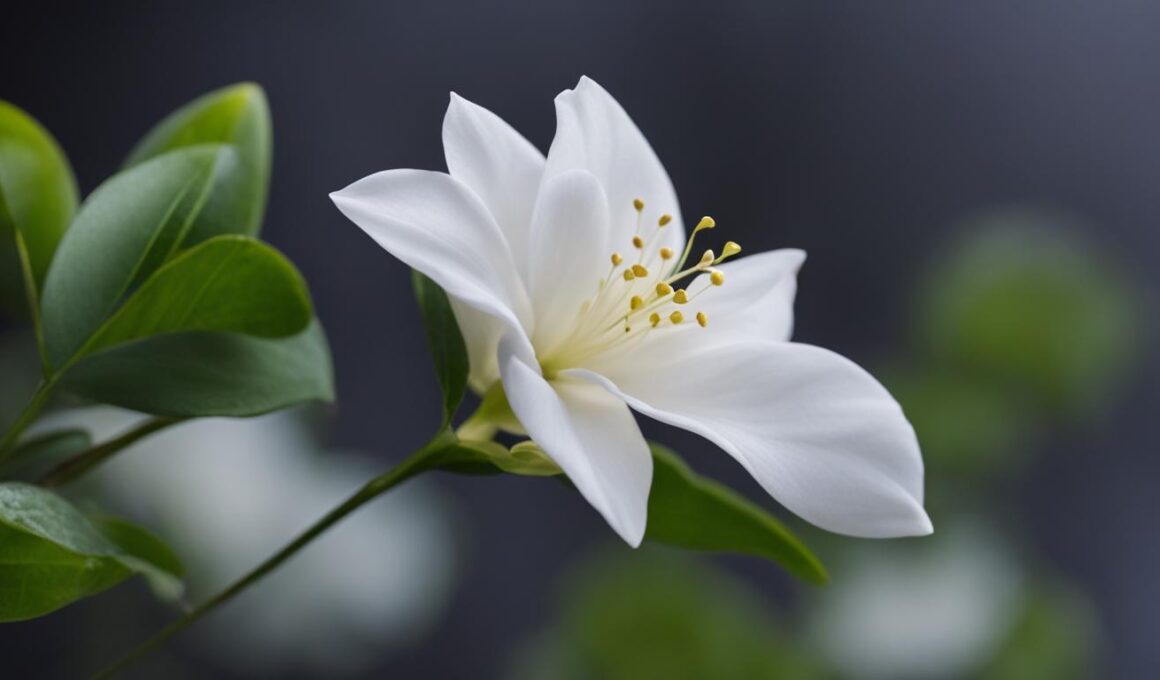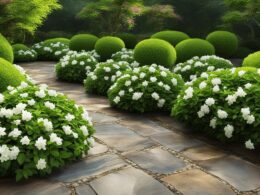Discover the captivating fragrance of jasmine as we delve into its intricate aroma and explore the enchanting world of this timeless flower. Known for its delicate beauty and intoxicating scent, jasmine has been a favorite in perfumery and aromatherapy for centuries. But what exactly does jasmine smell like? Let’s unravel the secrets of its fragrance.
The scent of jasmine is difficult to put into words, as it encompasses a delicate balance of sweet and floral notes, with a touch of muskiness. Imagine a fragrance that evokes feelings of romance, elegance, and luxury. The aroma of jasmine is powerful and intoxicating, capable of filling a room with its sweet perfume. Its complexity unfolds over time, revealing different layers of scent, making it a truly captivating experience.
Some people also perceive subtle fruity or spicy undertones in jasmine’s fragrance, adding an extra dimension to its olfactory allure. The mystical and enchanting scent of jasmine flowers has the ability to transport you to another time and place, immersing you in a world of beauty and serenity.
Experience the fragrance of jasmine and let its alluring scent captivate your senses. Whether encountered in a tranquil garden, a luxurious perfume, or a soothing candle, jasmine is sure to leave an indelible impression with its sweet and floral aroma.
Stay tuned to learn more about the various types of jasmine and its fascinating history in our upcoming articles.
What Is Jasmine and Its Various Types?
Jasmine is a plant belonging to the olive family and has over 200 species. It is native to tropical and warm temperate regions of Eurasia, Australasia, and Oceania. The flowers of jasmine are star-shaped and come in various colors like white and yellow.
Some common types of jasmine include:
- Common Jasmine (Jasminum officinale): This variety has white star-shaped flowers and a sweet, floral fragrance with a subtle musky undertone.
- Arabian Jasmine (Jasminum sambac): Also known as Sampaguita, it has small, waxy, highly fragrant flowers with a sweet, floral aroma and notes of honey, tea, and spice.
- Winter Jasmine (Jasminum nudiflorum): This hardy deciduous shrub blooms in late winter or early spring with bright yellow flowers, but it has little to no fragrance.
- Italian Jasmine (Jasminum humile): This evergreen shrub has yellow, tubular flowers with a sweet and exotic fragrance with hints of citrus and spice.
- Pink Jasmine (Jasminum polyanthum): A fast-growing vine with delicate pink flowers and a sweet, floral scent with a hint of spice.
The image above showcases the different types of jasmine plants, including common jasmine, Arabian jasmine, winter jasmine, Italian jasmine, and pink jasmine. Each one possesses its own unique beauty and fragrance, adding to the allure and variety of this exquisite flower.
Jasmine plants are not only aesthetically pleasing, but they also offer a delightful aroma that can enhance your surroundings. From the delicate white blooms of common jasmine to the vibrant yellow flowers of winter jasmine, there is a type of jasmine to suit every taste and preference.
Whether you prefer the sweet and exotic scent of Italian jasmine or the delicate floral notes of pink jasmine, incorporating these fragrant plants into your garden or indoor space will undoubtedly elevate the ambiance and provide a sensory delight.
So, whether you’re looking to enhance your garden, create a fragrant indoor oasis, or simply enjoy the beauty of jasmine, exploring the various types of this enchanting plant will open up a world of possibilities. Embrace the diversity of jasmine and let its captivating presence fill your senses with joy and tranquility.
The History and Cultural Significance of Jasmine
The history of jasmine is rich and spans back centuries. This captivating flower has been revered in various cultures for its beauty and intoxicating fragrance.
Originating in Persia and Asia, jasmine quickly gained popularity for its enchanting scent. It was used in perfumes, and its delicate blooms adorned homes and gardens. In Persia, jasmine held deep cultural significance and was used in religious ceremonies and traditional medicine.
Jasmine cultivation eventually spread to China, where it became an integral part of Chinese culture. The Chinese incorporated jasmine into their tea ceremonies, appreciating both the fragrance and the calming properties it brought. To this day, jasmine tea remains a popular beverage in Chinese culture.
In the 16th century, European explorers brought jasmine to Europe, where it quickly became a beloved ornamental plant. Its delicate flowers and mesmerizing scent captivated the hearts of Europeans. Jasmine became a symbol of elegance and romance during the Renaissance and Baroque periods.
Today, jasmine continues to be widely cultivated and cherished. It is used in the production of perfumes, soaps, and candles, as well as in teas and other products. In countries like Iran, jasmine’s cultural significance endures, and it is still used in religious ceremonies and traditional medicine.
Is Jasmine a Type of Pink Flowering Shrub?
Yes, Jasmine is a type of pink flowering shrub. With its delicate petals and sweet fragrance, it is easy to identify pink flowering shrub as Jasmine. These lovely plants are popular in gardens and landscaping for their beauty and aromatic blooms.
Conclusion
Jasmine is a captivating and enchanting fragrance that has stood the test of time. Its sweet and floral aroma with hints of muskiness, fruitiness, and spiciness makes it a beloved scent in perfumery and aromatherapy.
Jasmine flowers come in different varieties, each with its unique fragrance and appearance. From the delicate white blooms of Common Jasmine to the waxy flowers of Arabian Jasmine, each type offers a distinctive olfactory experience.
The history and cultural significance of jasmine span across various cultures and countries. From its origins in Persia and Asia to its introduction in Europe by the Portuguese, jasmine has been revered as a symbol of beauty, love, and purity.
Whether you encounter the scent of jasmine in a garden, a perfume, or a candle, it has the power to transport you to a world of elegance and romance. Embrace the allure of jasmine and immerse yourself in its captivating fragrance.









